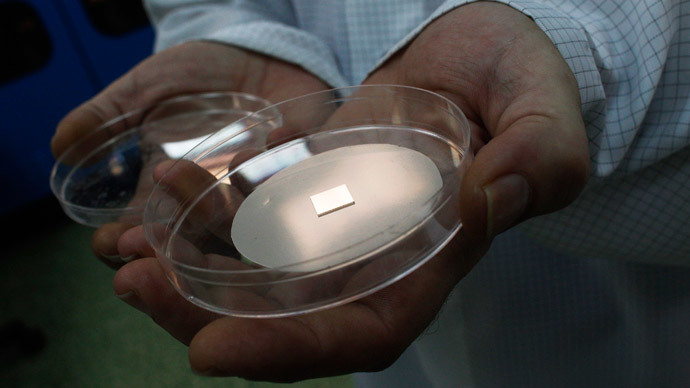Fuel from thin air? Graphene breakthrough may lead to green car revolution

Scientists believe they can use the same material found in pencil lead to revolutionize the green car industry. They discovered that graphene may serve as a fuel cell membrane and even allow the harvesting of hydrogen from air.
The reason the researchers at the University of Manchester got so excited is that the fuel cells generate electricity from hydrogen. Graphene is known for its barrier qualities, and does not allow any other gases, including hydrogen itself, or liquids to pass through it, which is crucial for the fuel cell technology.
An even more exciting development is the possibility of ‘sieving’ hydrogen from the air in future and using it to react with oxygen in a fuel cell, which could then produce electricity and water without leaving a carbon footprint.
“Essentially you pump your fuel from the atmosphere and get electricity out of this fuel, in principle. Before this paper, this wouldn’t even be speculation; it would be science fiction. At least our paper provides a guidance and proof that this kind of device is possible and doesn’t contradict to any known laws of nature,” Professor Andre Geim of Manchester University, who leads the study, said as cited by the Independent.
“We are very excited about this result because it opens a whole new area of promising applications for graphene in clean energy harvesting and hydrogen-based technologies,” said Marcelo Lozada-Hidalgo, co-researcher on the study.
The research has been published in the latest issue of Nature.
One-atom-thick graphene is the world’s thinnest, but also strongest, material – 200 times tougher than steel. It is also the world’s best conductor of electricity. Knowing that graphene is impermeable to even the smallest of atoms, hydrogen, Geim's team decided to test whether protons, or hydrogen atoms stripped of their electrons, were also repelled. They were left pleasantly surprised.
Sir Andre Geim's colleague bet his 2004 #graphene paper wouldn't hit 500 citations. It's in the top 100 of all time. http://t.co/w2gjvzhtKx
— graphenemanchester (@UoMGraphene) October 31, 2014
“There have been three or four scientific papers before about the theoretical predictions for how easy or how hard it would be for a proton to go through graphene and these calculations give numbers that take billions and billions of years for a proton to go through this same membrane,” Professor Geim said, who won the Nobel Prize for Physics in 2010 for discovering graphene along with his colleague Konstantin Novoselov in 2004.
The final side of the NGI's black veil is going up right now under a blue Manchester sky... pic.twitter.com/u9sFVtNCD9
— graphenemanchester (@UoMGraphene) November 18, 2014
The team found that if the temperature was raised and if the graphene films were covered with a catalyst such as platinum, then the protons would have little problem in passing through.“It’s just so dense an electronic field it just doesn’t let anything through. But it’s a question of numbers, no more than that. This makes a difference between billions of years and a reasonable time for permeation. There is no magic,” he added.














